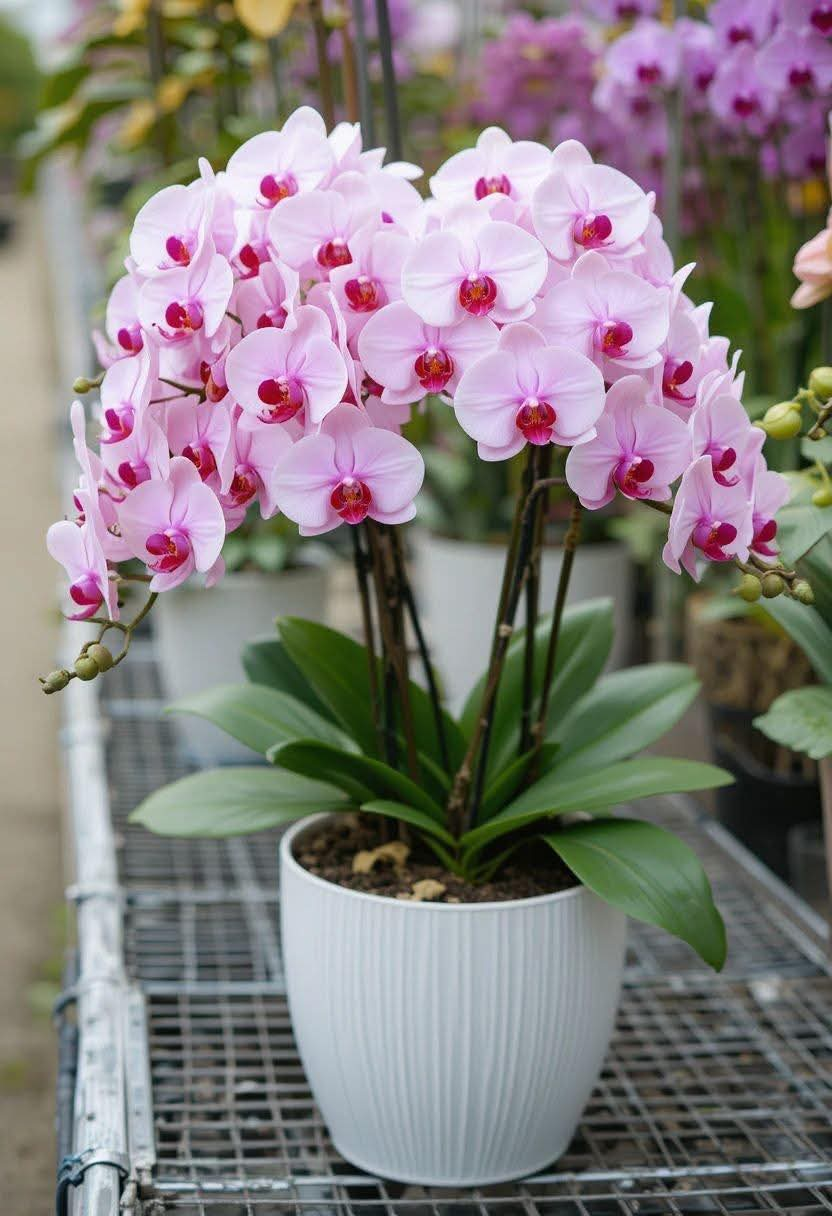Phalaenopsis orchids, commonly known as moth orchids, and their hybrid counterpart Doritaenopsis, are among the most popular and easy-to-grow orchids for beginners. Their elegant, long-lasting blooms and relatively low maintenance requirements make them a favorite among houseplant enthusiasts.
If you want to keep these orchids thriving, it’s essential to understand their growing conditions. In this article, we’ll explore the ideal light, temperature, watering, humidity, potting mix, fertilization, and repotting techniques to ensure your orchid flourishes.
Light Requirements ☀️
Phalaenopsis and Doritaenopsis orchids need bright, indirect light to thrive. However, they should not be exposed to direct sunlight, which can scorch their delicate leaves.
✅ Best Light Conditions:
East or West-Facing Windows – These locations provide filtered sunlight, making them ideal.
Sheer Curtains – If placed in a bright room, use sheer curtains to diffuse direct sunlight.
Artificial Grow Lights – If natural light is insufficient, fluorescent or LED grow lights can supplement their needs.
🚫 Avoid:
South-facing windows (unless filtered).
Deep shade, which can prevent blooming.
Temperature Needs 🌡️
Phalaenopsis orchids thrive in warm indoor temperatures similar to their tropical origins.
✅ Ideal Temperature Range:
Daytime: 65-80°F (18-27°C)
Nighttime: 55-65°F (13-18°C)
🚫 Avoid:
Cold Drafts – Keep them away from air conditioners, open windows, and chilly doorways.
Sudden Temperature Fluctuations – Rapid shifts in temperature can stress the plant.
Watering Guidelines 💧
Overwatering is the most common mistake when caring for orchids. These plants prefer to dry slightly between waterings rather than sitting in constantly wet soil.
✅ Best Watering Practices:
Water only when needed – Stick your finger an inch into the potting mix. If it feels dry, it’s time to water.
Use lukewarm water – Avoid cold water, as orchids are sensitive to temperature shocks.
Ensure proper drainage – Always use pots with drainage holes to prevent root rot.
🚫 Avoid:
Watering on a strict schedule (it depends on humidity and potting mix).
Letting water sit in the crown of the plant, which can lead to crown rot.
Humidity Levels 💦
Orchids thrive in moderate to high humidity levels. In dry environments, you may need to boost humidity levels.
✅ How to Maintain Humidity:
Humidity Trays – Place the orchid pot on a tray filled with pebbles and water (ensuring the pot does not sit directly in water).
Misting – Light misting in the morning can help, but avoid excessive moisture on the leaves.
Humidifiers – If you live in a dry climate, placing a humidifier nearby can be beneficial.
🚫 Avoid:
Placing the orchid near heating vents or radiators, which can dry out the air.
Choosing the Right Potting Medium 🌱
Unlike typical houseplants, orchids do not grow in regular soil. Instead, they require a well-draining, aerated potting mix.
✅ Best Potting Mix for Orchids:
Bark Mix – Allows airflow around the roots.
Sphagnum Moss – Retains moisture while preventing overwatering.
Perlite & Charcoal – Helps with drainage and prevents root rot.
🚫 Avoid:
Dense, moisture-retaining soil, which can suffocate roots.
Fertilization Tips 🌿
Phalaenopsis orchids benefit from regular fertilization, especially during the growing season.
✅ Best Fertilizing Practices:
Use a balanced orchid fertilizer (e.g., 20-20-20 or orchid-specific formula).
Dilute to half-strength before applying.
Fertilize every 2–4 weeks during active growth.
Reduce or stop fertilizing during dormancy (winter).
🚫 Avoid:
Over-fertilizing, which can cause salt buildup and root burn.
Repotting Orchids 🪴
Phalaenopsis orchids need repotting every 1–2 years or when their potting mix starts to break down.
✅ Best Repotting Practices:
Repot in spring or after blooming.
Use a clear plastic pot with drainage holes, allowing roots to absorb light.
Trim dead or rotting roots before repotting.
🚫 Avoid:
Repotting too frequently, which can stress the plant.
Final Thoughts 🌸
Phalaenopsis and Doritaenopsis orchids are rewarding plants that thrive with proper care. By providing the right light, temperature, watering, humidity, and nutrients, you can enjoy stunning orchid blooms year after year.
Whether you’re a beginner or an experienced grower, these beautiful orchids bring tropical elegance and vibrant color into your home. Start growing your own today and enjoy their breathtaking beauty!
Would you like to add Phalaenopsis orchids to your collection? Let us know in the comments below! 💜✨
